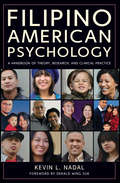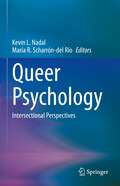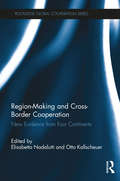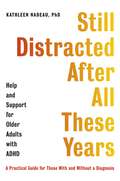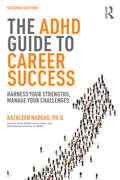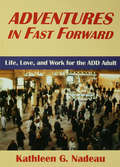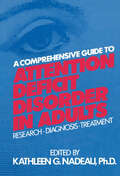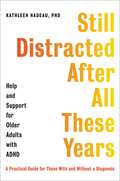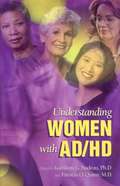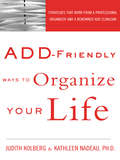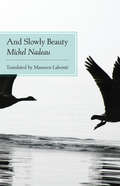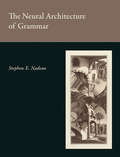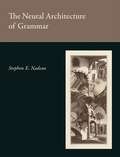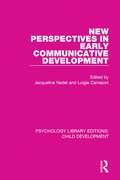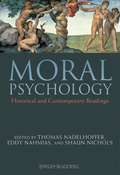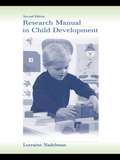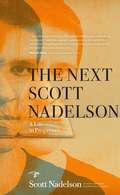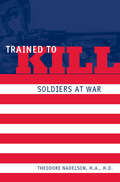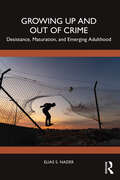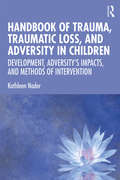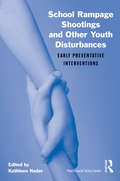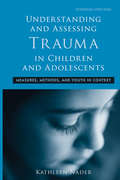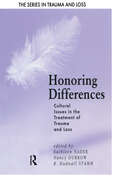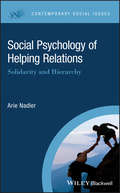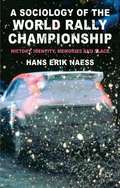- Table View
- List View
Filipino American Psychology
by Kevin L. NadalPraise for Filipino American Psychology: A Handbook of Theory, Research, and Clinical Practice "Filipino American Psychology: A Handbook of Theory, Research, and Clinical Practice is destined to make a major contribution to the field of Asian American psychology and to the larger field of multicultural psychology. " -From the Foreword by Derald Wing Sue, PhD Professor of Psychology and Education, Teachers College, Columbia University "Dr. Nadal has done a superb job of locating the experiences of Filipino Americans within the larger scholarship on ethnic minority psychology, while also highlighting the complexity, richness, and uniqueness of their psychological experiences. This book should be a part of everyone's library. " -E. J. R. David, PhD Assistant Professor, Department of Psychology, University of Alaska Anchorage "Ranging from historical contexts to present-day case studies, theoretical models to empirical findings, self-reflection activities to online and media resources, Filipino American Psychology will engage, stimulate, and challenge both novices and experts. Without question, Dr. Nadal's book is a foundational text and a one-stop resource for both the Filipino American community and the community of mental health professionals. " -Alvin N. Alvarez, PhD Professor, San Francisco State University A landmark volume exploring contemporary issues affecting Filipino Americans, as well as the most successful mental health strategies for working with Filipino American clients Addressing the mental health needs of the Filipino American population-an often invisible, misunderstood, and forgotten group-Filipino American Psychology provides counselors and other mental health practitioners with the knowledge, awareness, and skills they can use to become effective and culturally competent when working with their Filipino American clients. Filipino American Psychology begins by looking at the unique cultural, social, political, economic, and mental health needs of Filipino Americans. Noted expert-and Filipino American-Kevin Nadal builds on a foundational understanding of the unique role and experience of Filipino Americans, offering strategies for more effective clinical work with Filipino Americans in a variety of settings. A must-read for mental health professionals as well as educators and students in the mental health field, Filipino American Psychology is an insightful look at the Filipino American community and the nuances of the Filipino American psyche.
Queer Psychology: Intersectional Perspectives
by Kevin L. Nadal María R. Scharrón-del RíoQueer Psychology is the first comprehensive book to examine the current state of LGBTQ communities and psychology, through the lenses of both queer theory and Intersectionality theory. Thus, the book describes the experiences of LGBTQ people broadly, while also highlighting the voices of LGBTQ people of color, transgender and gender nonconforming people, those of religious minority groups, immigrants, people with disabilities, and other historically marginalized groups. Each chapter will include an intersectional case example, as well as implications for policy and practice.This book is especially important as there has been an increase in psychology and counseling courses focusing on LGBTQ communities; however, students often learn about LGBTQ-related issues through a White cisgender male normative perspective. The edited volume contains the contributions of leading scholars in LGBTQ psychology, and covers a number of concepts – ranging from identity development to discrimination to health.
Region-Making and Cross-Border Cooperation: New Evidence from Four Continents (Routledge Global Cooperation Series)
by Elisabetta Nadalutti Otto KallscheuerThis book explores the nature of regions and how they function, particularly at the local and micro-level. Whilst recent years have seen a resurgence in debates around the roles which regions can play in development, the focus has tended to be on 'macro' regional institutions such as the EU, ASEAN, ECOWAS or MERCOSUR. In contrast, this book offers a nuanced analysis of the important field of sub-regionalism and sub-national cross-border cooperation. Region-Making and Cross-Border Cooperation takes a fresh look at both theoretical and empirical approaches to ‘region-making’ through cooperation activities at the micro-level across national borders in Europe, Southeast Asia, Latin America, Africa and the Middle East. The book aims to explore the role that institutional dynamics play at the micro-level in shaping local and global ties, investigate what the formal and informal integration factors are that bolster regionalism and regionalization processes, and to clarify to what extent, and under what conditions, cooperation at the micro-level can be instrumental to solving common problems. Scholars and students within politics, sociology, geography, and economics would find this book an important guide to regionalism at a micro-local level perspective.
Still Distracted After All These Years: Help and Support for Older Adults with ADHD
by Kathleen NadeauThe world's foremost expert shares advice on later-in-life ADHD, tackling everything from finances, parenting, planning for retirement, social life and work, in this practical and helpful guide for those with and without a diagnosis.Do you...· Forget to pay bills?· Live in a disorganised environment?· Struggle with mental health?· Procrastinate on projects, even ones that initially excite you?· Have high levels of conflict with those close to you?· Have a child diagnosed with ADHD and/or a family history of learning disorders?If some of these patterns sound familiar, you might understandably fear the onset of dementia, but you may have undiagnosed attention deficit hyperactivity disorder (ADHD). ADHD in adults is one of the most common disorders. Living with ADHD in our later years is hugely influenced by co-occurring issues, such as anxiety, depression or low self-esteem. In addition, the presence of learning disorders, heightened levels of stress, the presence or lack of support from others, and the number of people we are responsible for, can all complicate and intensify the effects of ADHD.The good news is that you've come to the right place to learn more about how to lead a calmer, happier, more productive life. Dedicated to the health and wellbeing of today's older adults with ADHD, Still Distracted After All These Years offers strategies to build a support system, gain better control over your daily life and create a more ADHD-friendly retirement.
The ADHD Guide to Career Success: Harness your Strengths, Manage your Challenges
by Kathleen G NadeauJust as the classroom poses the greatest challenges for children and teens with ADHD, the workplace is the arena where Adult ADHD poses the greatest threat. And while adults with ADHD are likely to face professional challenges, it is possible to cultivate a work environment that enables them to thrive and uses the strengths of this unique condition to their advantage. Featuring a large open format with summaries at the beginning of each chapter and designed with the ADHD reader in mind, this newly revised and updated edition offers an easy-to-follow progression of useful information interwoven with practical strategies for career success.
Adventures In Fast Forward: Life, Love and Work for the Add Adult
by Kathleen G. NadeauWritten in response to common questions posed by adults with ADD in the author's clinical practice - and for all adults with ADD, as well as those who care about them - this book is designed as a clear and practical guide for day-to-day life. The author's perspective is one of compassionate realism as she answers specific questions related to understanding and accommodating ADD whether making daily decisions or larger life choices.
A Comprehensive Guide To Attention Deficit Disorder In Adults: Research, Diagnosis and Treatment
by Kathleen G. NadeauThis groundbreaking volume, written by pioneering clinicians and researchers firmly convinced of the neurobiological underpinnings of ADD in adults, is the first to provide broad coverage of this burgeoning field. Written for professionals who diagnose and treat adults with ADD, it provides information from psychologists and physicians on the most current research and treatment issues regarding our understanding of ADD as a neurobiological disorder. According to the contributors, ADD in adults may be responsible for difficulties ranging from minor attention, memory, and organization problems in well-functioning adults to drug abuse and criminal behavior. A Comprehensive Guide to Attention Deficit Disorder in Adults begins by addressing the history of ADD and the evolution of our understanding of the disorder. The neurobiology of ADD is examined, laying a solid foundation for the clinician to develop a scientific understanding of this complex syndrome. The assessment and differential diagnosis of ADD is explored from the perspectives of a variety of specialists in the field. This includes an exploration of the interrelationships between attention deficit disorder and other neurodevelopmental disabilities that may interact with ADD to affect cognitive functioning, and an examination of the connections between ADD and a host of psychiatric conditions. Also covered is the process of differential diagnosis from a neurological perspective, which will help the non-medically trained clinician better to determine when a complete neurological evaluation seems warranted in the assessment process. Authors examine ADD with and without hyperactivity and describe a wide range of assessment tools that can be useful in developing a full diagnostic picture of different conditions that must be addressed in treating adults with the disorder. A wealth of experience, highly practical suggestions, and an optimistic outlook are the hallmark of the section on treatment. The authors strongly recommend a multifaceted treatment plan combining medication, psychotherapy, and addressing the pervasive self-esteem issues which typically haunt the adult whose condition has gone untreated. Specific treatment issues for Adults with ADD are also discussed. These include:- * the development of practical life management skills * the difficulties in relationships * ADD within the context of marriage and family * and higher education and the workplace. The volume concludes with a discussion of the legal implications of the diagnosis of ADD in adults as it pertains to education and employment, the important role of support groups for adults with ADD, and a thought-provoking examination of current and future research including the need for increased public recognition of ADD in adults. A Comprehensive Guide to Attention Deficit Disorder in Adults is a pioneering volume that will bring the most current information available to the attention of those able to help adult ADD sufferers...vocation and rehabilitation counselors, and numerous psychotherapists who recognize symptoms of depression and anxiety, but perhaps overlook the underlying attention deficit disorder. It will stimulate the interdisciplinary research that is the key to increasing knowledge and educate those who can truly make a difference.
Still Distracted After All These Years: Help and Support for Older Adults with ADHD
by Kathleen G. NadeauOne of the foremost ADHD experts tackles adult cases in the aging generation and offers a practical, helpful guide for those with and without a diagnosis Do you… Forget to pay bills Live in a disorganized environment Struggle with depression and anxiety Procrastinate on projects, even ones that initially excite you Have high levels of conflict with those close to you Have a child diagnosed with ADHD and/or a family history of learning disorders If some of these patterns sound familiar, you may have undiagnosed ADHD. ADHD in adults is one of the most common disorders. Living with ADHD in our later years is hugely influenced by multiple factors: co-occurring issues, such as anxiety, depression, low self-esteem, and learning disorders combined with a heightened level of stress, the presence or lack of support from others, and the number of people we are responsible for, can complicate and intensify the effects of ADHD. The good news is that you&’ve come to the right place to learn more about how older adults with ADHD can lead calmer, happier, more productive lives. Dr. Kathleen Nadeau, a foremost authority on ADHD, has been working with this underserved and underrepresented population. Dedicated to the health and wellbeing of today&’s older adults with ADHD, Still Distracted After All These Years offers strategies to build a support system, gain better control over your daily life and create a more ADHD-friendly retirement.
Understanding Women With AD/HD
by Kathleen G. Nadeau Patricia O. QuinnUnderstanding Women with AD/HD is designed to be a practical and readable guide for women at any age, with special chapters focusing on different stages of life.
ADD-FRIENDLY Ways To ORGANIZE Your Life
by Kathleen Nadeau Judith KolbergOrganizing books fall short of addressing the unique needs of adults with ADD. They fail to understand the clinical picture of ADD and how it impacts the organizing process, often making their advice irrelevant or frustrating when put into practice. Books about ADD may address organization/disorganization but do so in a cursory fashion and on a very small scale. This is a book that has ADD-Friendly advice with the ADD-er in mind. This collaboration brings forth the best underlying understanding with the most effective and practical remedy from ADD experts in two important fields-professional organization and clinical psychology. Finally, it offers organizing advice that ranges from self-help to utilizing the help of non-professionals, to using professional assistance. Thus it permits the listener to decide where they are personally in the organizing process, and what level of support will be most beneficial to their unique situation.
And Slowly Beauty
by Michel Nadeau Maureen LabontéEverything changes on what begins as a typical day in the life of the aptly named Mr. Mann, a forty-eight-year-old, buttoned-down, middle management type in a pinstriped grey suit, who feels himself losing touch with his job, his wife, his children, and the rest of his urban life. He wins tickets to a production of Chekhov's Three Sisters and realizes that the mid-life cocoon he has spun around himself is beginning to unwind.And Slowly Beauty, first performed in French in 2003, was created collaboratively by Michel Nadeau and colleagues from his Quebec troupe, Théâtre Niveau Parking. With the intensity of an electric current striking a reflecting pool, Nadeau shows us how Chekhov's century-old drama about the yearning of three sisters in a dreary provincial town directly addresses Mann's own stifled existence and liberates him from his self-imposed "gulag."Mann returns to see Three Sisters a second time, finding that its themes of beauty and poetry lost to the monotony of everyday existence mirror many aspects of his own existence. At the same time, Mann's dying friend realizes that he is for the first time able to appreciate the astonishing beauty of trees outside his window. The irony of such a deathbed admission is not lost on Mr. Mann.With Chekhov's characters and themes coming to inhabit the protagonist's mind and life, emphasized by the repeated image of geese flying overhead - these birds do not question the purpose of their journey but find it sufficient to fly in unison - And Slowly Beauty speaks eloquently to the power of art to transform lives.Cast of 3 women and 3 men.
The Neural Architecture of Grammar (The\mit Press Ser.)
by Stephen E. NadeauA comprehensive, neurally based theory of language function that draws on principles of neuroanatomy, cognitive psychology, cognitive neuropsychology, psycholinguistics, and parallel distributed processing.Linguists have mapped the topography of language behavior in many languages in intricate detail. To understand how the brain supports language function, however, we must take into account the principles and regularities of neural function. Mechanisms of neurolinguistic function cannot be inferred solely from observations of normal and impaired language. In The Neural Architecture of Grammar, Stephen Nadeau develops a neurologically plausible theory of grammatic function. He brings together principles of neuroanatomy, neurophysiology, and parallel distributed processing and draws on literature on language function from cognitive psychology, cognitive neuropsychology, psycholinguistics, and functional imaging to develop a comprehensive neurally based theory of language function. Nadeau reviews the aphasia literature, including cross-linguistic aphasia research, to test the model's ability to account for the findings of these empirical studies. Nadeau finds that the model readily accounts for a crucial finding in cross-linguistic studies—that the most powerful determinant of patterns of language breakdown in aphasia is the predisorder language spoken by the subject—and that it does so by conceptualizing grammatic function in terms of the statistical regularities of particular languages that are encoded in network connectivity. He shows that the model provides a surprisingly good account for many findings and offers solutions for a number of controversial problems. Moreover, aphasia studies provide the basis for elaborating the model in interesting and important ways.
The Neural Architecture of Grammar
by Stephen E. NadeauLinguists have mapped the topography of language behavior in many languages in intricate detail. To understand how the brain supports language function, however, we must take into account the principles and regularities of neural function. Mechanisms of neurolinguistic function cannot be inferred solely from observations of normal and impaired language. In The Neural Architecture of Grammar, Stephen Nadeau develops a neurologically plausible theory of grammatic function. He brings together principles of neuroanatomy, neurophysiology, and parallel distributed processing and draws on literature on language function from cognitive psychology, cognitive neuropsychology, psycholinguistics, and functional imaging to develop a comprehensive neurally based theory of language function. Nadeau reviews the aphasia literature, including cross-linguistic aphasia research, to test the model's ability to account for the findings of these empirical studies. Nadeau finds that the model readily accounts for a crucial finding in cross-linguistic studies--that the most powerful determinant of patterns of language breakdown in aphasia is the predisorder language spoken by the subject--and that it does so by conceptualizing grammatic function in terms of the statistical regularities of particular languages that are encoded in network connectivity. He shows that the model provides a surprisingly good account for many findings and offers solutions for a number of controversial problems. Moreover, aphasia studies provide the basis for elaborating the model in interesting and important ways.
New Perspectives in Early Communicative Development (Psychology Library Editions: Child Development #8)
by Jacqueline Nadel Luigia CamaionSince the 1970s researchers in the communicative development of infants and small children had rejected traditional models and began to explore the complex, dynamic properties of communicative exchanges. This title, originally published in 1993, proposed a new and advanced frame of reference to account for the growing body of empirical work on the emergence of communication processes at the time. Communication development in the early years of life undergoes universal processes of change and variations linked to the characteristics and qualities of different social contexts. The first section of the book presents key issues in communication research which were either revisited (intentional communication, imitation, symbolic play) or newly introduced (co-regulation, the role of emotions, shared meaning) in recent years. The second section provides an account of communication as a context-bound process partly inspired by theoretical accounts such as those of Vygotsky and Wallon. Included here are new studies showing differences in communication between infants compared with those between infants and adults, which also have important methodological implications. With perspectives from developmental psychology, psycholinguistics and educational psychology, the international contributors give a multi-disciplinary account of the expansion, variety and richness of current research on early communication. This title will be of particular interest to those involved in child development and communication research, as well as for social, educational and clinical psychologists.
Moral Psychology: Historical and Contemporary Readings
by Thomas Nadelhoffer Eddy Nahmias Shaun NicholsMoral Psychology: Historical and Contemporary Readings is the first book to bring together the most significant contemporary and historical works on the topic from both philosophy and psychology. Provides a comprehensive introduction to moral psychology, which is the study of psychological mechanisms and processes underlying ethics and morality. Unique in bringing together contemporary texts by philosophers, psychologists and other cognitive scientists with foundational works from both philosophy and psychology. Approaches moral psychology from an empirically informed perspective. Explores a wide range of topics from passion and altruism to virtue and responsibility. Editorial introductions to each section explain the background of and connections between the selections.
Research Manual in Child Development
by Lorraine NadelmanThis unique hands-on lab manual in child development provides great ideas and resources for teaching research courses involving child subjects. It includes projects in psychomotor/perceptual, cognitive, and social development. Projects are preceded by background essays on the history of that topic, related research, theoretical issues, and controversies. Each project has hypotheses to test, detailed procedures to follow, all stimuli, individual and group data sheets, empty tables, suggested statistics, discussion questions, and an updated bibliography. Special features of this second edition: *The introductory text portion details research considerations, including an introduction to psychological research, sections on developmental research, children as subjects, and general experimental research procedures. *The popular Infant Observation project has the student visit homes with babies for a semester and provides practice in observational data collection, reliability assessment, and report writing. *The cognitive development section includes two new subfields: Theory of Mind and Language--Children's Interpretation of the Word Big, in addition to classic studies of Piaget's spatial perspective-taking and attention and memory. The final chapter describes a suggested neuropsychological project. *The socialized child section includes a new study on sibling relationships as seen by the older or younger sibling, in addition to the earlier projects on self-esteem, sex identity, and cooperation-competition. The final section describes a suggested cross-cultural interview project.
The Next Scott Nadelson
by Scott NadelsonBeginning in the summer of 2004, Scott Nadelson's life fell apart. His fiancée left him a month before their planned wedding for another woman who made her living performing as a drag king. He moved into a drafty attic. His car's brakes went out. He learned that his cat was dying. Over the next two years, he'd struggle, with equivocal and sometimes humiliating results, to get back on his feet, in the process re-examining his past to understand his present circumstances.The Next Scott Nadelson: A Life in Progress is a literary self-portrait that revolves around the dissolution of a relationship but encompasses the long process of a young man's halting self-discovery. Exploring episodes from the life of its author/narrator marked by failure, suffering, and hope, as well as literary and cultural influence, the book weighs the things that make us want to give up against the things that keep us going. Though many of the pieces are comic and self-deprecating-some self-lacerating-they are above all meditations on the nature of the self and the way it can be constructed through memory, desire, and the imagination. Together they form a larger narrative, a search for fulfillment and identity in a life often governed by fear.With humor and unflinching honesty, Scott Nadelson scrutinizes his life to discover who he is and finds just how elusive such a discovery can be. To read the resulting book is to join him on a personal journey that is thoughtful, surprising, occasionally hilarious, and unapologetically human.
Trained to Kill: Soldiers at War
by Theodore NadelsonIn two decades of clinical work with Vietnam veterans, psychiatrist Theodore Nadelson sought to understand a seeming paradox about his patients: even veterans being treated for post traumatic stress disorder often still felt attracted to the danger and violence of combat and killing. How this could be possible became a central focus of Nadelson's work and thought, as he looked to veterans' stories and within himself for pieces of the human puzzle.This compelling book is the result of that exploration. In it, Nadelson confronts a dark side of human psychology with sensitivity and depth, revealing startling truths about the allure of violence. Among the topics he addresses are the ways in which the concept of war shapes boys' lives from an early age, what happens when killing becomes a job, and how memories of the thrill of combat affect a soldier after the war is over. He probes the aftermath of September 11, including the historic implications of women's experience in the military. A veteran himself, the author weaves together insights from his own clinical and military experience and from the moving narratives of former soldiers with his thoughtful analysis of readings from world literature to answer tough questions: What does our attraction to killing mean for the future of war and civilization? What implications does it have for the way we understand peacetime violence in our society?
Growing Up and Out of Crime: Desistance, Maturation, and Emerging Adulthood
by Elias Samir NaderDevelopmental norms and expectations for young people aged 18–25 have diverged from previous generations, shifting the role of maturation that prompts us to examine if and how this maturation can influence desistance from crime. Utilizing evidence from the narratives of justice-involved emerging adults, this book details key turning points for young people trying to desist from crime. Building on evidence from researchers and theorists as well as from the author’s own narrative interviews, this book provides a brief and approachable review of the extant literature, summarizing work across the fields of developmental psychology, sociology, and criminology to provide the reader with an understanding of the maturation of young people in their late teens and 20s before concluding with considerations for policy and practice building from this evidence. Growing Up and Out of Crime is perfect for students, scholars, and academics who study young people and behavior across the life course and maturation, deviance, and desistance as well as for practitioners working on desistance or working with young people engaged in deviance.
Handbook of Trauma, Traumatic Loss, and Adversity in Children: Development, Adversity’s Impacts, and Methods of Intervention
by Kathleen NaderThe Handbook of Trauma, Traumatic Loss, and Adversity in Children is a developmentally oriented book rich with findings related to child development, the impact of trauma on development and functioning, and interventions directed at treating reactions to trauma. Aspects of attachment and parenting and the use of interrelationships toward therapeutic ends are included in each age-related section of the book, ranging from 0 to 18+. Consolidating research from a range of disciplines including neurobiology, psychopathology, and trauma studies, chapters offer guidance on the potentially cascading effects of trauma, and outline strategies for assisting parents and teachers as well as children. Readers will also find appendices with further resources for download on the book’s website. Grounded in interdisciplinary research, the Handbook of Trauma, Traumatic Loss, and Adversity in Children is an important resource for mental health researchers and professionals working with children, adolescents, and families during the ongoing process of healing from traumatic exposure.
School Rampage Shootings and Other Youth Disturbances: Early Preventative Interventions (Psychosocial Stress Series)
by Kathleen NaderTogether, School Rampage Shootings and Other Youth Disturbances and its accompanying CD provide a complete toolkit for using early preventative interventions with elementary-school age children. In ten thoughtful, clearly written chapters, both new and experienced practitioners will find a wealth of research- and evidence-based techniques that link personal child and childhood environmental conditions to a number of symptoms, disturbances, and disorders in youth or adulthood, including the expression of rampage violence. In the second part of this indispensable collection – the accompanying CD – practitioners will find worksheets and handouts that translate useful techniques into reality and are sure to make any practice come alive.
Understanding and Assessing Trauma in Children and Adolescents: Measures, Methods, and Youth in Context (Psychosocial Stress Series #Vol. 35)
by Kathleen NaderIn this volume, Kathleen Nader has compiled an articulate and comprehensive guide to the complex process of assessment in youth and adolescent trauma. There are many issues that are important to evaluating children and adolescents, and it is increasingly clear that reliance on just one type of assessment does not provide the most accurate results. From history to recent advances, this book covers a wide range of methods and measures for assessing trauma, including case examples to illustrate the integration of these different facets. Altogether, the broad scope and inclusive depth of this work make it an essential addition to the field of trauma assessment.
Honoring Differences: Cultural Issues in the Treatment of Trauma and Loss (Series in Trauma and Loss)
by Kathleen Nader Nancy Dubrow B. Hudnall StammWars, violence, and natural disasters often require mental health interventions with people from a multitude of ethnic groups, religions, and nationalities. Within the United States, those who care for the victims of trauma often assist individuals from a variety of immigrant cultures. Moreover, many aspiring mental health professionals from other countries seek training in the United States, creating an additional need for a broad cultural awareness within educational institutions.Honoring Differences deals with the treatment of trauma and loss while recognizing and understanding the cultural context in which the mental health professional provides assistance. Training in the cultural beliefs that may interact with traumatic reactions is essential, both to assess traumatic response accurately and to prevent harm in the process of assessing and treating trauma. Various cultures within the United States and several international communities are featured in the book.Each culturally-specific chapter aims to help the caregiver honor the valued traditions, main qualities, and held beliefs of the culture described and prepare to enter the community well-informed and well-equipped to intervene or consult effectively. Further more, the book provides information about issues, traditions, and characteristics of the culture, which are essential in moving through the phases of post-trauma or other mental health intervention.Mental health professionals, trauma specialists, missionaries, and organizations that send consultants to other nations, will find Honoring Differences essential reading. It will also be a resource to those who are interested in cultural differences and in honoring the belief systems of other cultures and nations.
Social Psychology of Helping Relations: Solidarity and Hierarchy (Contemporary Social Issues)
by Arie NadlerExamines the major aspects of giving and receiving help in interpersonal and intergroup relations This unique book extends the traditional emphasis on interpersonal help-giving in order to consider a wider spectrum of interpersonal and intergroup helping relations. Help giving is viewed as reflecting people’s care for others, while at the same time dependency on help and giving help imply lower and higher places on the social hierarchy, respectively. It studies the psychology of what goes into helping someone and integrates experimental work conducted in the social psychological laboratory with applied research from volunteer organizations, schools, and work and family environments. In addition to research on the giving of help, the book considers the recipient of help and reviews research and theory on people's readiness to seek and receive help. Unlike much of past research in this context that has been interested in the “generosity question” (i.e., whether or not people help others) the book considers how different kinds of assistance (i.e., autonomy and dependency-oriented help) shape helping interactions. It then goes beyond the analyses of the immediate helping interaction to consider the long-term consequences of giving and receiving help. Finally, the book addresses theory and research on intergroup helping relations. Social Psychology of Helping Relations: Solidarity and Hierarchy begins with a general introduction to the topic. It then offers a series of broad perspectives, covering the philosophical and psychological theory, evolution, and overview of social psychological research. Next, the book looks at the social psychology of helping relations, examining the parties involvedt, and the “why” behind their actions. The positives and negatives of giving and receiving assistance, and the links between status and interpersonal and intergroup helping relations are also covered. It considers how giving, seeking and receiving help maintains or challenges status relations between individuals and groups. The book finishes with a conclusion that wraps up the many lessons learned. Looks at solidarity and inequality in social interactions Examines why people are ready to give and receive help Studies the consequences of giving and receiving help Highlights important implications to different kinds of help beyond the dichotomy between giving/receiving help or not Addresses research and theory on interpersonal and intergroup helping relations The implications of helping relations for personal and social change Social Psychology of Helping Relations: Solidarity and Hierarchy is an ideal book for advanced students, researchers and individuals interested in social psychology, counselling, social work, Sociology, and Political Science.
A Sociology of the World Rally Championship
by Hans Erik NaessDrawing upon interviews with key people in the World Rally Championship as well as trans-local ethnographic research, this book explores questions of commerciality and sporting identity, tackling the sport's controversial handling of the shift into 'the commercial age'. It is essential reading on combining sporting heritage and commercial progress.
